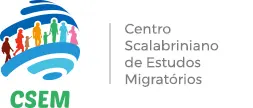La Editorial CSEM has just published the book Movilidad en la frontera: Tijuana como espacio de (re)construcción de la vida. The book is an initiative that seeks to deepen and broaden the reflections and advances resulting from research carried out at and from the Mother Assunta Institute (IMA), a shelter located in Tijuana, B.C., on the border between Mexico and the United States. Linked to the Congregation of Scalabrinian Sisters, the IMA is specifically dedicated to caring for migrant women and their children. In addition, other institutions that provide services to migrants and refugees who have just arrived in the city took part in the research. Three important aspects are discussed in this publication. The first refers to the experience of many migrants who arrive in Tijuana and need to rebuild their lives. The second aspect refers to the role of Civil Society Organizations (CSOs), and other actors, who are inserted into this context of migration by interacting with migrants from the humanitarian assistance service. However, it is worth pointing out that the relationships of reception, care and assistance are not without contradictions, complexities, limitations and difficulties. The third aspect refers to the issue of borders. From a conceptual viewpoint where the border emerges as a dimension of the social where social agents - people on the move and institutions, promote and elaborate processes of reconstruction of migrant life trajectories. In these processes, migrants and refugees are protagonists and cannot be seen solely as beneficiaries of humanitarian aid and assistance.
The first part of the book seeks to explore contextual and coyuntural aspects of migration in the context of the Mesoamerican migratory system (Mexico and Central America), with emphasis on the chapter Migrantes Desarraigados. Mesoamerica migrant laboratory, by Jorge Durand.
The second part includes an analysis based on the data from the research "Reconstruyendo la vida en la frontera: asistencia y atención a migrantes en la Frontera Norte de México" (Rebuilding life on the border: assistance and care for migrants on Mexico's northern border) of different themes such as: the processes of stigmatization/discrimination directed at the figure of the migrant; institutional relationships in the context of migration and LGBTI activism in Tijuana; the role of religion and religiosity in caring for migrant people; and the theme about the border as a space for the exercise of agency by migrants and refugees, among others.

